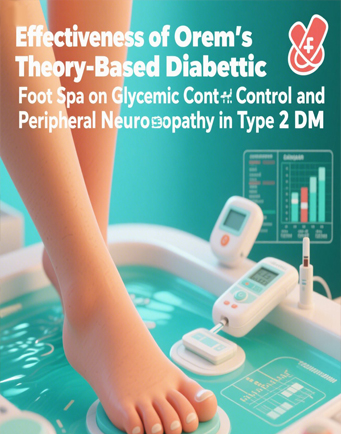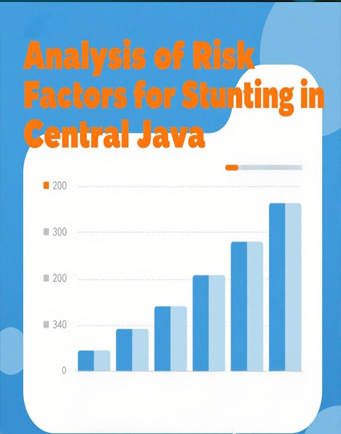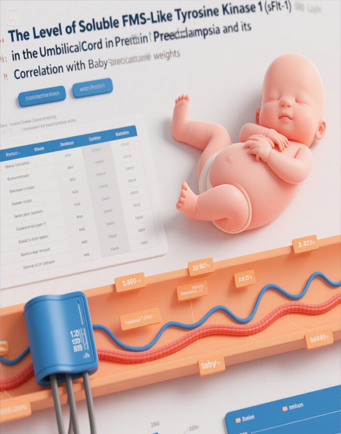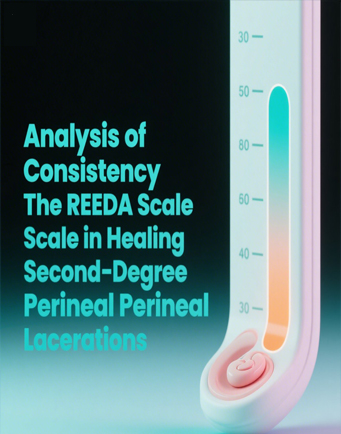The Reappearance of Menstruation After Childbirth Associated with Contraceptive Use Among Women of Reproductive Age in Kyrgyzstan
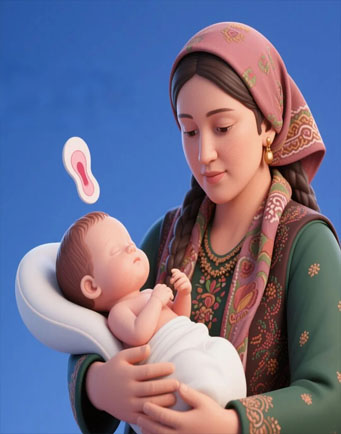
Downloads
The return of menstruation after childbirth is an important aspect of women's reproductive health, especially in the context of contraceptive use. This study aims to explore how the return of menstruation after childbirth is closely connected to contraceptive use, with various factors such as age, marital status, region, place of residence, education level, ethnicity, and wealth index in Kyrgyzstan playing a role. This study employed secondary data from the Kyrgyzstan 2023 Multiple Indicator Cluster Survey (MICS), focusing on women of reproductive age (15-49 years). The analysis utilized a final sample of 1.059 women and applied binary logistic regression to examine the relationship between contraceptive use and the return of menstruation after childbirth while controlling for factors such as age, marital status, region, education level, ethnicity, and wealth index. The study found that among 1.059 women who had given birth, 30.88% were using contraceptive methods, and 64.68% experienced the return of menstruation post-childbirth. The multivariate analysis indicates that menstrual return after giving birth, having marital status formerly married/in union, in Naryn, Talas, and Chui region, and having the richest wealth index significantly influence contraceptive use among women of reproductive age. These results underscore the importance of comprehensive sexual health education, improved healthcare services, and targeted communication strategies to increase contraceptive use in the region.
Abraha, T. H., Teferra, A. S., & Gelagay, A. A. (2017). Postpartum modern contraceptive use in northern Ethiopia: prevalence and associated factors. Epidemiology and Health, 39, e2017012. https://doi.org/10.4178/epih.e2017012
Adhikari, R., Acharya, D., Ranabhat, C. L., & KC, R. (2019). Factors Associated with Non-Use of Contraceptives among Married Women in Nepal. Journal of Health Promotion, 7, 7–18. https://doi.org/10.3126/jhp.v7i0.25490
Ashebir, W., & Tadesse, T. (2020). Associated Factors of Postpartum Modern Contraceptive Use in Burie District, Amhara Region, Ethiopia. Journal of Pregnancy, 2020, 1–9. https://doi.org/10.1155/2020/6174504
Dagnew, G. W., Asresie, M. B., Fekadu, G. A., & Gelaw, Y. M. (2020). Modern contraceptive use and factors associated with use among postpartum women in Ethiopia; further analysis of the 2016 Ethiopia demographic and health survey data. BMC Public Health, 20(1), 661. https://doi.org/10.1186/s12889-020-08802-6
de Vargas Nunes Coll, C., Ewerling, F., Hellwig, F., & de Barros, A. J. D. (2019). Contraception in adolescence: the influence of parity and marital status on contraceptive use in 73 low-and middle-income countries. Reproductive Health, 16(1), 21. https://doi.org/10.1186/s12978-019-0686-9
Demie, T. G., Demissew, T., Huluka, T. K., Workineh, D., & Libanos, H. G. (2018). Postpartum Family Planning Utilization among Postpartum Women in Public Health Institutions of Debre Berhan Town, Ethiopia. Journal of Women’s Health Care, 7(2), 1000426. https://doi.org/10.4172/2167-0420.1000426
Dev, R., Kohler, P., Feder, M., Unger, J. A., Woods, N. F., & Drake, A. L. (2019). A systematic review and meta-analysis of postpartum contraceptive use among women in low- and middle-income countries. Reproductive Health, 16(1), 154. https://doi.org/10.1186/s12978-019-0824-4
Essien, S. K., Chireh, B., & Essien, J. K. (2024). Knowledge about unintended pregnancy shortly after childbirth: An issue of ineffective counseling or adherence? Women’s Health, 20. https://doi.org/10.1177/17455057241255655
Habibov, N., & Zainiddinov, H. (2017). Effect of TV and radio family planning messages on the probability of modern contraception utilization in post-Soviet Central Asia. The International Journal of Health Planning and Management, 32(1), e17–e38. https://doi.org/10.1002/hpm.2318
Habyarimana, F., & Ramroop, S. (2018). The Analysis of Socio-Economic and Demographic Factors Associated with Contraceptive Use Among Married Women of Reproductive Age in Rwanda. The Open Public Health Journal, 11(1), 348–359. https://doi.org/10.2174/1874944501811010348
Kogay, V., & Itua, I. (2017). Prevalence and socio-economic factors determining use of modern contraception among married men in Kyrgyzstan: evidence from a demographic and health survey. Public Health, 142, 56–63. https://doi.org/10.1016/j.puhe.2016.10.008
Maretalinia, M., Rusmitasari, H., Supriatin, S., Amaliah, L., Sukmawati, E., & Suwarni, L. (2023). Factors influencing the utilization of the Modern Family Planning (MFP) method under the National Health Insurance in Indonesia: An analysis of the 2017 IDHS. Public Health of Indonesia, 9(2), 47–56. https://doi.org/10.36685/phi.v9i2.694
National Statistical Committee of the Kyrgyz Republic and UNICEF. (2024). Kyrgyz Republic Multiple Indicator Cluster Survey 2023, Survey Findings Report. Bishkek, Kyrgyzstan: National Statistical Committee of the Kyrgyz Republic and UNICEF.
Pokhrel, T., Aryal, K., Adhikari, R., Dulal, B. P., Karki, D. K., Dahal, H. R., Dangol, M. S., Poudel, P., Bhattarai, N., & Lamichhane, P. (2022). Socioeconomic Determinants of Inequalities in the Use of Modern Contraception among Currently Married Women. Journal of Nepal Health Research Council, 19(04), 705–711. https://doi.org/10.33314/jnhrc.v19i04.3738
Reddy N., S., Sindhu, K. N., Ramanujam, K., Bose, A., Kang, G., & Mohan, V. R. (2019). Exclusive breastfeeding practices in an urban settlement of Vellore, southern India: findings from the MAL-ED birth cohort. International Breastfeeding Journal, 14(1), 29. https://doi.org/10.1186/s13006-019-0222-0
Robinet, L., Jeffredo, A., & Clesse, C. (2023). Factors Influencing Contraceptive Choice During the Postpartum Period: A Qualitative Systematic Review. Journal of Midwifery & Women’s Health, 68(2), 265–286. https://doi.org/10.1111/jmwh.13471
Shabangu, Z., & Madiba, S. (2019). The Role of Culture in Maintaining Post-Partum Sexual Abstinence of Swazi Women. International Journal of Environmental Research and Public Health, 16(14), 2590. https://doi.org/10.3390/ijerph16142590
Tesfu, A., Beyene, F., Sendeku, F., Wudineh, K., & Azeze, G. (2022). Uptake of postpartum modern family planning and its associated factors among postpartum women in Ethiopia: A systematic review and meta-analysis. Heliyon, 8(1), e08712. https://doi.org/10.1016/j.heliyon.2021.e08712
Vanwesenbeeck, I. (2020). Comprehensive Sexuality Education. In Oxford Research Encyclopedia of Global Public Health. Oxford University Press. https://doi.org/10.1093/acrefore/9780190632366.013.205
World Health Organization. (2022). Kyrgyzstan: health system review. Health Systems in Transition, 24(3), 1-149. Retrieved from: https://eurohealthobservatory.who.int/publications/i/kyrgyzstan-health-system-review-2022
Wulifan, J. K., Mazalale, J., Jahn, A., Hien, H., Ilboudo, P. C., Meda, N., Robyn, P. J., Hamadou, S., Haidara, O., & Allegri, M. De. (2017). Factors Associated with Contraceptive Use among Women of Reproductive Age in Rural Districts of Burkina Faso. Journal of Health Care for the Poor and Underserved, 28(1), 228–247. https://doi.org/10.1353/hpu.2017.0019
Copyright (c) 2025 JURNAL INFO KESEHATAN

This work is licensed under a Creative Commons Attribution-NonCommercial-ShareAlike 4.0 International License.
Copyright notice
Ownership of copyright
The copyright in this website and the material on this website (including without limitation the text, computer code, artwork, photographs, images, music, audio material, video material and audio-visual material on this website) is owned by JURNAL INFO KESEHATAN and its licensors.
Copyright license
JURNAL INFO KESEHATAN grants to you a worldwide non-exclusive royalty-free revocable license to:
- view this website and the material on this website on a computer or mobile device via a web browser;
- copy and store this website and the material on this website in your web browser cache memory; and
- print pages from this website for your use.
- All articles published by JURNAL INFO KESEHATAN are licensed under the Creative Commons Attribution 4.0 International License. This permits anyone to copy, redistribute, remix, transmit and adapt the work provided the original work and source is appropriately cited.
JURNAL INFO KESEHATAN does not grant you any other rights in relation to this website or the material on this website. In other words, all other rights are reserved.
For the avoidance of doubt, you must not adapt, edit, change, transform, publish, republish, distribute, redistribute, broadcast, rebroadcast or show or play in public this website or the material on this website (in any form or media) without appropriately and conspicuously citing the original work and source or JURNAL INFO KESEHATAN prior written permission.
Permissions
You may request permission to use the copyright materials on this website by writing to jurnalinfokesehatan@gmail.com.
Enforcement of copyright
JURNAL INFO KESEHATAN takes the protection of its copyright very seriously.
If JURNAL INFO KESEHATAN discovers that you have used its copyright materials in contravention of the license above, JURNAL INFO KESEHATAN may bring legal proceedings against you seeking monetary damages and an injunction to stop you using those materials. You could also be ordered to pay legal costs.
If you become aware of any use of JURNAL INFO KESEHATAN copyright materials that contravenes or may contravene the license above, please report this by email to jurnalinfokesehatan@gmail.com
Infringing material
If you become aware of any material on the website that you believe infringes your or any other person's copyright, please report this by email to jurnalinfokesehatan@gmail.com.








